Alternative Rock Records With Aircraft on the Cover
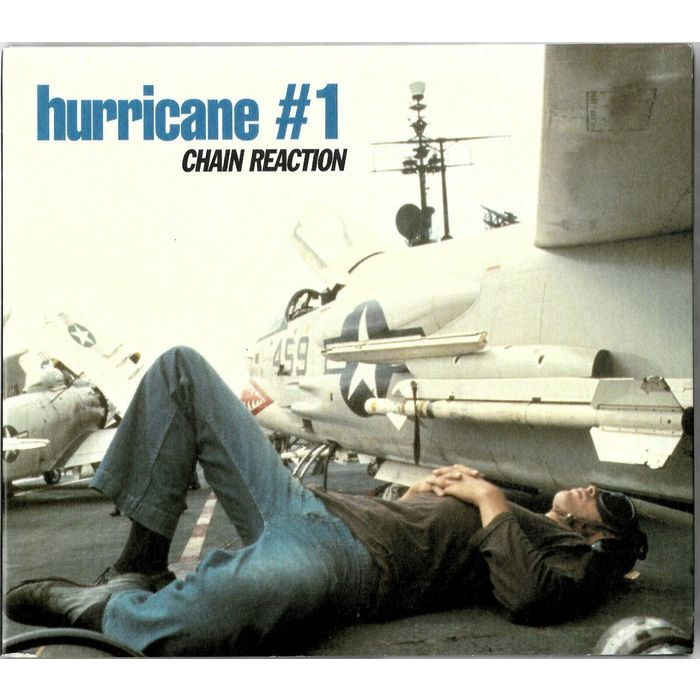
Aviation enthusiasts, in all their fussy, pedantic, literal-thinking fuckery, should not be allowed anywhere near anything as gloriously grubby as alternative rock. Sadly, helped across the rubicon of brain hemispheres by music’s greatest traitors, record collectors, we have let Matthew Dupuy befoul the world of alternative rock with a look at record covers through the lens of the aerophile.
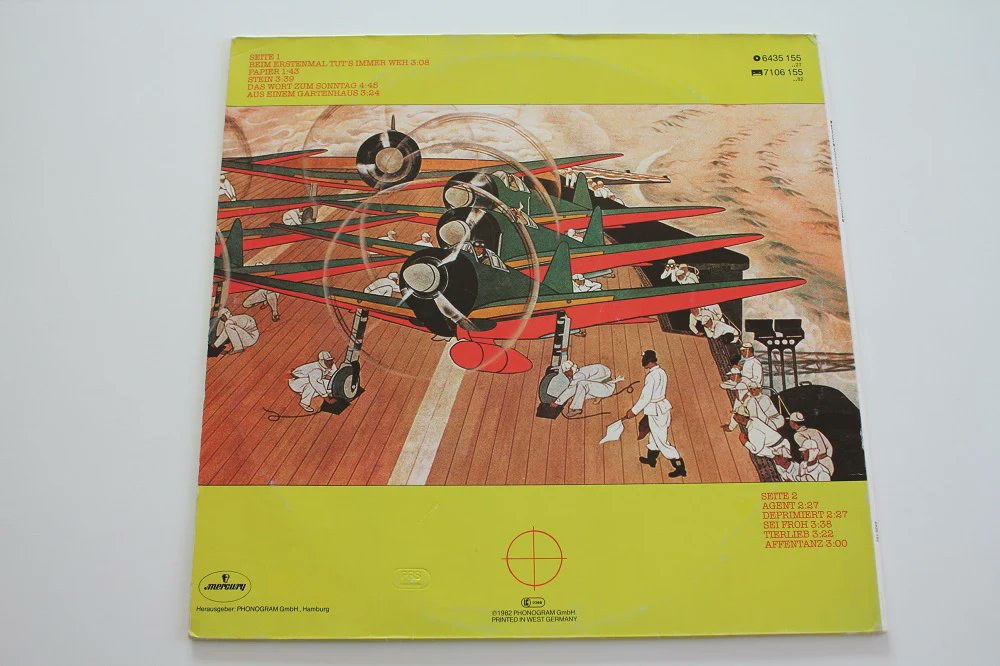
1: Suede – Sci-Fi Lullabies (B-sides compilation album, 1997)

Aircraft depicted: An image by photographer John Kippin of the bullet-riddled carcass of an English Electric Lightning, used as a target at Otterburn Training Area in Northumberland, North-East England. On CD releases, the wider aspect ratio of the front cover means a similarly dilapidated Hawker Hunter can also be seen in the distance, under a rudimentary camo net on the left-hand edge of the image.
Does the image accurately reflect the music?: Yes. Without a doubt. Kippin’s image of ruined, obsolete machinery in a harsh, overcast landscape, with its uneasy blend of loneliness and implied violence, perfectly captures the atmosphere of Suede’s stories of drugs, sleaze and doomed urban youth.
How good is the record?: Despite being a B-sides collection, the care Suede took over their early singles means the sprawling double-album that is Sci-Fi Lullabies is actually one of their best records and well worth investigating. The first disc, in particular, is absolutely stunning.
A 2013 NME poll saw it included in their list of the 500 greatest albums of all time, which is pretty good going for a B-sides compilation.
2: Les Rallizes Dénudés – Yodo-Go-A-Go-Go [Flightless Bird Needs Water Wings] (Bootleg album, 2007)

Aircraft depicted: A China Southern Airlines Boeing 757-200, involved in a Chinese government anti-hijacking exercise at Urumqi International Airport in October 2004.
Does the image accurately reflect the music?: Sort of. It is unclear if Les Rallizes’ hellish oeuvre could really be accurately described by anything as prosaic as a photograph. I’m not sure what would describe it. One of Bacon’s “screaming pope” paintings, perhaps? Or maybe the aftermath of a particularly gruesome murder?
The image on the cover obliquely refers to the activities of one of the band’s founder members – bassist Moriaki Wakabayashi – who graduated from playing with Les Rallizes to participating in the hijacking of a Japan Air Lines Boeing 727 in 1970, along with fellow conspirators from the completely deranged Japanese Red Army Faction (an incident that could be a separate Hush Kit article on its own).
After some shenanigans and the taking hostage of Japan’s Transport Minister in exchange for releasing 23 women and children on the flight, they had the aircraft flown to North Korea, where Wakabayashi and his comrades were decorated as heroes and still reside, albeit unwillingly.
So it reflects that aspect of the band pretty well. But does it represent the music? Impossible to say. It’s impossible to say if some of it is music at all, to be honest.
How good is the record?: It rather depends what you mean when you say “good”. Les Rallizes Dénudés were one of the strangest bands who ever existed. Their entire output consists of bootlegs of varying quality, so none of it is recorded in a way that you would really describe as “good”.
Even when captured in reasonably decent quality, much of their music is like staring into a howling abyss of white noise. ‘Smoking Cigarette Blues’, the fourth track on this haphazard collection, goes on for nearly 20 minutes and sounds like somebody has put Jimi Hendrix, an early incarnation of The Rolling Stones and the house band for the musical The War of the Worlds into a rapidly spinning cement mixer, locked it in a shed and then recorded the resulting cacophony from a bunker half a mile away. It is a genuinely terrifying hurricane of incomprehensible, but oddly muffled noise that seems to go on forever.
I mean, if you like that sort of thing (and a growing cult of saucer-eyed noiseniks apparently do), then I imagine it’s great . But if you prefer your music to not actively wish you harm, then maybe give this one a miss.
3. The Dead Kennedys – ‘Holiday In Cambodia’ (7” Single, 1980)
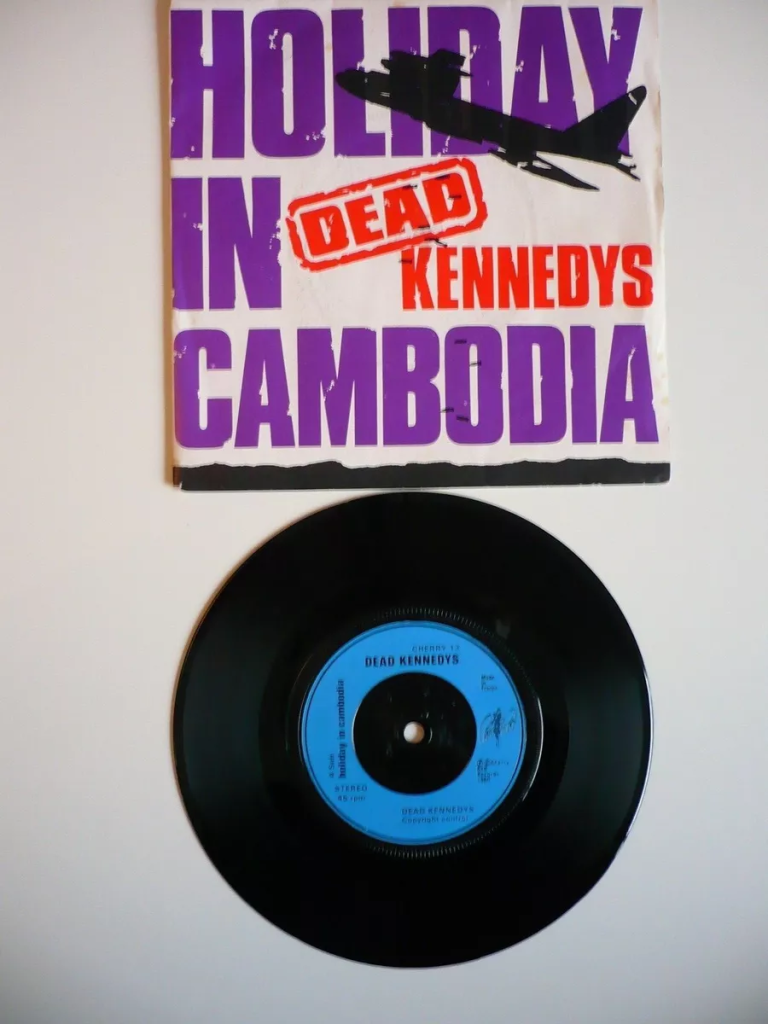
Aircraft depicted: The unmistakable outline of a B-52 dropping a string of bombs, presumably referring to the use of the BUFF in the deeply questionable Operation Menu raids over Cambodia in 1969 and 1970. ‘Holiday In Cambodia’ was released with at least three different sleeves in different markets, with this one mostly used in Europe. Of the three, it is the only one depicting the B-52.
Does the image accurately reflect the music?: Anyone who has heard ‘Holiday In Cambodia’ will know that it is one of the great punk singles, featuring a monumental, doom-laden intro more indicative of an imminent air raid than pretty much any other song imaginable. A terrifying, rapidly building tidal wave of thundering bass, stampeding drums and slashing, echoey guitars, it is what Holst’s ‘Mars, the Bringer of War’ would have sounded like if it had been composed by four snotty, unwashed punks from San Francisco. So yes, it sounds exactly like the cover. In the best way.
How good is the record?: I just compared it to Holst and I wasn’t joking. It’s a masterpiece.
4. Mystere V – ‘No Message’ (7” single, 1980)
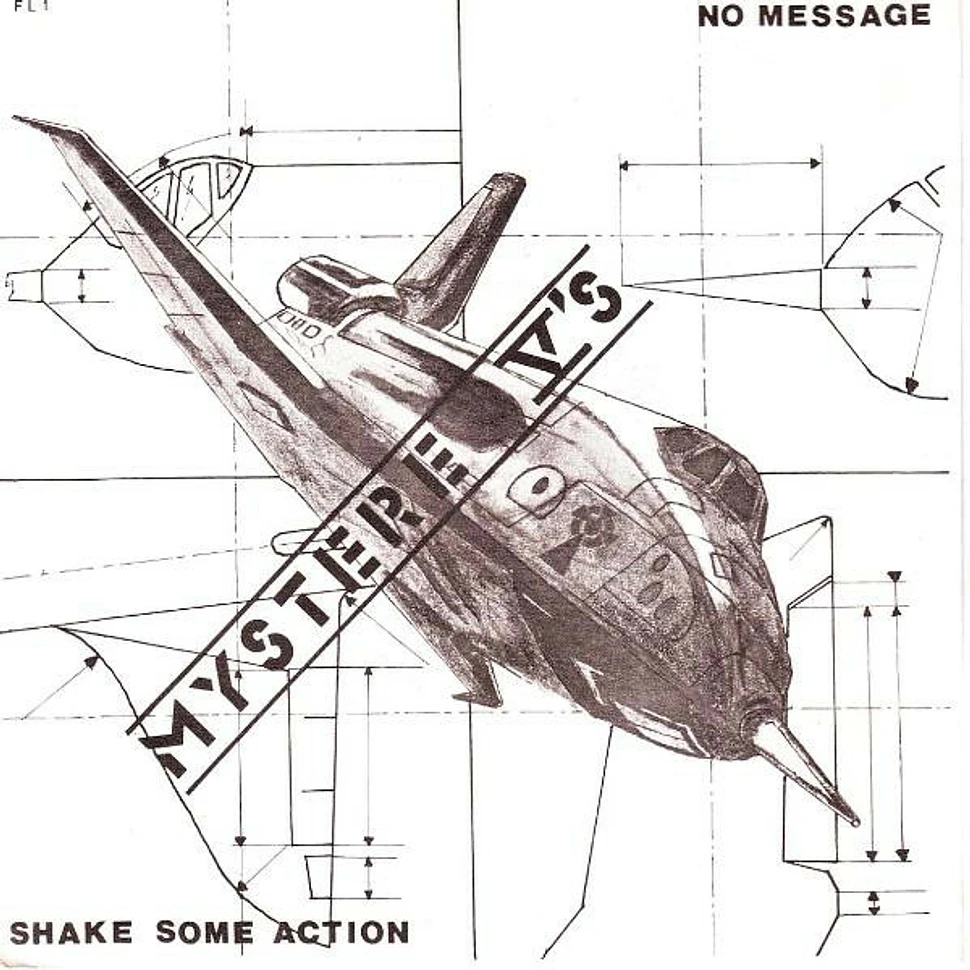
Aircraft depicted: A contemporaneous NME review of this single suggests it has “diagrams of the French fighter plane on the cover”. But this is why you should never employ music journalists in your Observer Corp, as that clearly isn’t a Mystere. If the band’s name is a nod to the French fighter, then they are not referring to any known type. The model following the Mystere IV was the extremely handsome Super Mystere. This was almost an entirely different aircraft from its predecessor, it was not known as the Mystere V, and it looked entirely unlike the aircraft on the cover of ‘No Message’. So, in conclusion:
- The aircraft on the cover appears to be a freelance drawing of a generic space shuttle, loosely modelled on the NASA prototype
- The NME is completely useless as a source for identifying aircraft.
Does the image accurately reflect the music?: Not really, no. I think the cover is a vague gesture to the band’s name rather than the song, which has no discernible relation to aeronautical themes. The sleeve credits its design to “Frenchy”, who according to the Mysteres’ drummer was “a non musician, a punk, who was then forming an indie-punk record label”. It is notable that “aircraft expert” is not listed among his attributes.
How good is the record?: I’m gonna be honest here and admit I bought this in a shop in Camden about 20 years ago because I liked the cover and the band name, then put it in a box and forgot about it. I only heard it for the first time recently when I was looking at records for this article. And it’s good. A bassy post-punk/ska number with appealingly glassy, echoey early 1980s production on it.
Weirdly, it makes me think of ‘Hollywood Nights’ by Bob Seger & The Silver Bullet Band, as they have similar chord sequences despite being extremely different songs. It has a functional cover of The Flamin’ Groovies’ ‘Shake Some Action’ on the B-side that the world didn’t really need. Not bad, though. Well worth a speculative £2 Camden purchase.
5. Talking Heads – Remain In Light (Album, 1980)
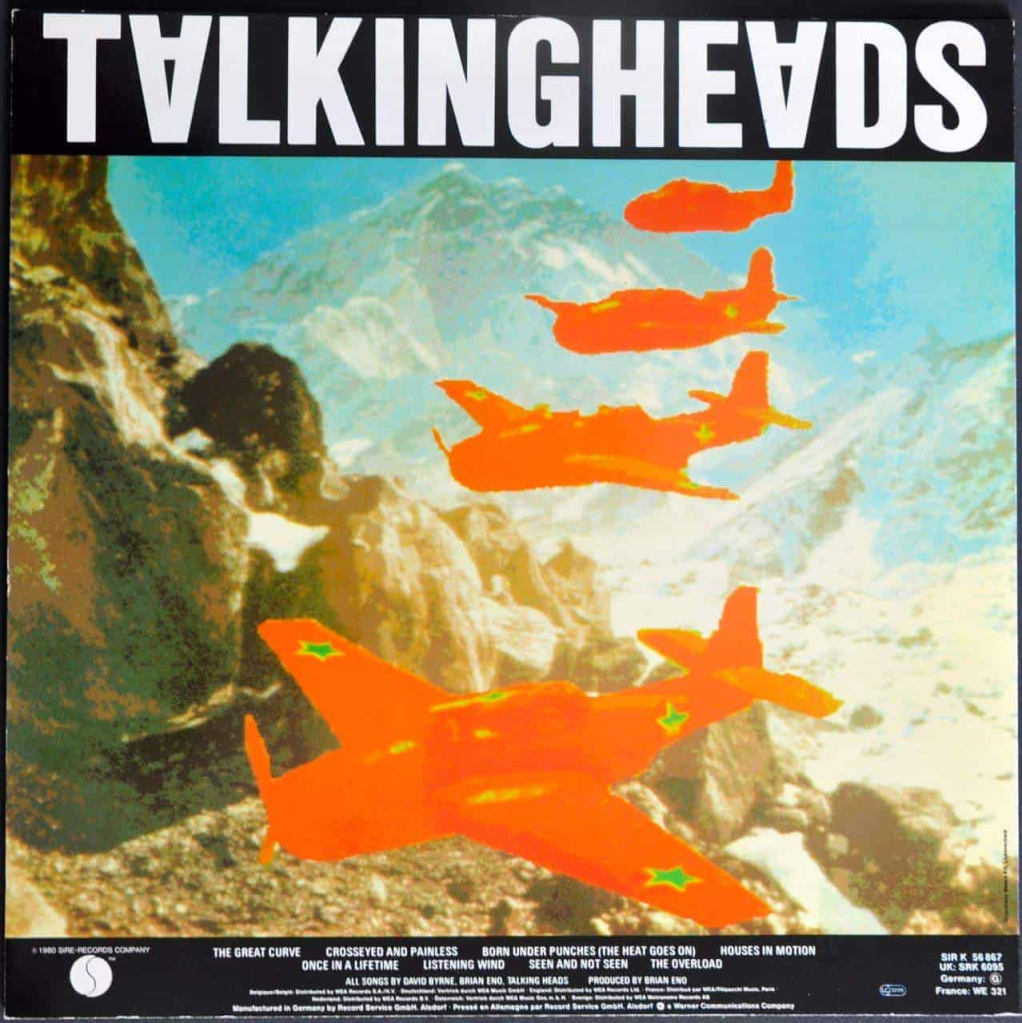
Aircraft depicted: 1980 was clearly quite the year for record sleeves depicting aeroplanes. In this case it is a flight of four US Navy Grumman TBF Avengers flying in formation over Norfolk, Virginia in September 1942*. This image has been digitally manipulated, with the aircraft being coloured in red and green and superimposed over the Himalayas. The image was selected from US Navy stock images by Talking Heads’ bassist Tina Weymouth, partly in tribute to her father, who had served as a US Navy pilot in World War II**.
This stock image was then manipulated on a computer at MIT by researcher Walter Bender, a process that took an astonishing length of time with the tiny amount of processing power then available, but which nevertheless made it the first album ever released with a computer-designed sleeve.
The resulting picture decorates the rear cover of Talking Heads’ seminal post-punk classic album, with the front cover displaying digitally defaced portraits of the band members. The Avenger image had originally been intended for the front cover to go with the album’s working title of Melody Attack, but it was later relegated to the back cover when the title was changed.
The innovative methods used in the sleeve’s creation, along with its striking design by graphic artist Tibor Kalman, led to the sleeve and its associated artwork being retained as a valuable cultural artifact by the Museum of Modern Art in New York.
* There is a common misconception that the Remain In Light Avenger image represents Flight 19, the Avenger training flight that disappeared in the Bermuda Triangle in 1945. While Weymouth may have considered this (the fate of Flight 19 was part of the plot of Close Encounters of the Third Kind, Steven Spielberg’s hit sci-fi movie that had come out in 1977, so it was in the public consciousness), she never mentioned it in interviews if she did.
** Tina Weymouth’s father, Ralph Weymouth, actually flew the Douglas SBD Dauntless dive bomber from the carriers Saratoga and Lexington during the war, rather than the Avenger. His exceptional wartime piloting exploits won him a Navy Cross and no fewer than five DFCs. He later transferred to jets, fought in Korea and finally retired as a Vice Admiral in 1973, before becoming an anti-nuclear campaigner as a consequence of his service in the occupation forces in Japan after the war. He died in January 2020 at the age of 102. He was quite the badass.
Does the image accurately reflect the music?: Kalman suggested that the image of the Avengers was retained after the album’s title was changed because it was appropriate, as the Iranian Hostage Crisis was going on when the album was recorded and released, but this is an oblique reference at best.
In truth the choice of a flight of Avengers was an odd one, given the era in which it was released. However, the hard, heavy outlines of the aircraft placed in an environment they are not intended for echoes the album’s unusual mix of edgy funk, angular post-punk, African-influenced polyrhythms and general Brian Eno-produced weirdness, with lyrical themes of faceless bureaucracy, post-colonial politics and the blending of government and capitalism.
In short, Tina Weymouth knew what she was doing.
How good is the record?: It’s the one with ‘Once In A Lifetime’ on it. And it’s not even the best song on there. If that isn’t good enough, then I’m not sure I can help you.
6. Godspeed You! Black Emperor – Yanqui U.X.O. (Album, 2002)
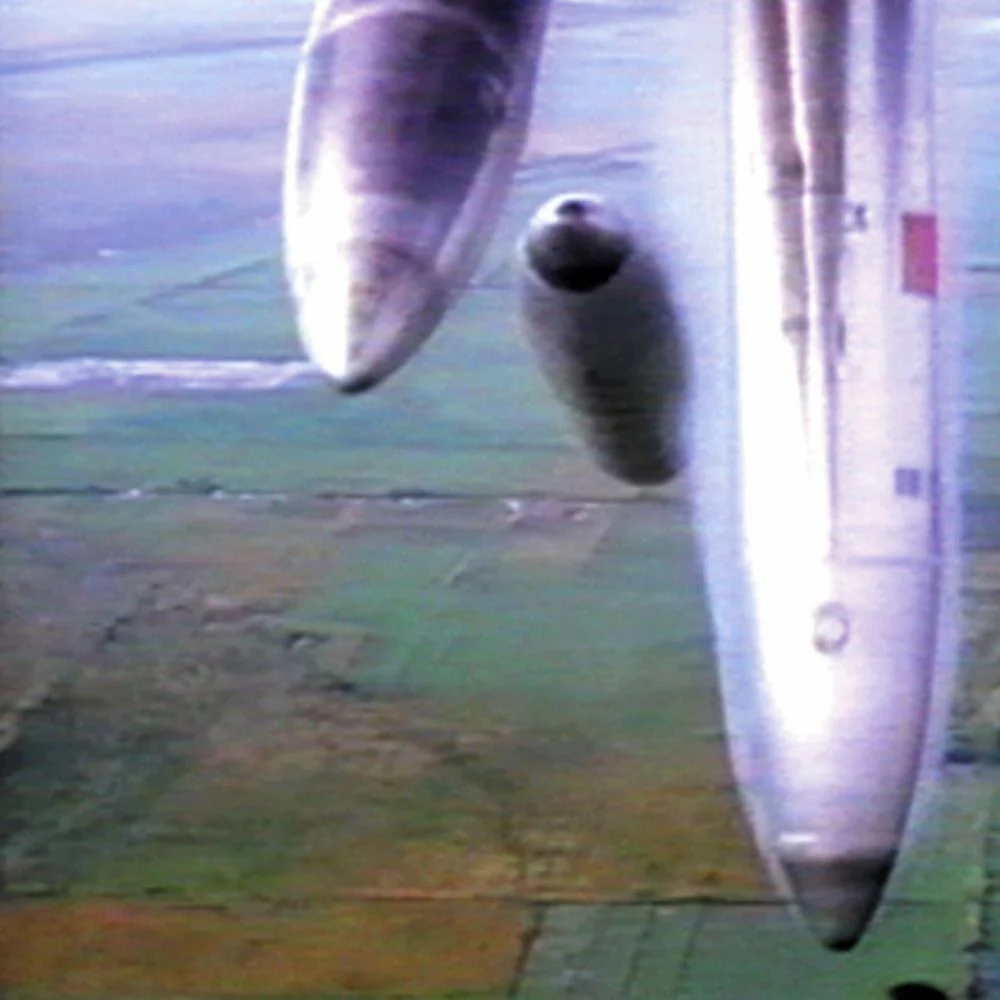
Aircraft depicted: No actual aircraft, but instead a rear-facing camera captures the release of what look like napalm canisters, presumably over Vietnam. You wouldn’t believe how much Vietnam-era ground attack footage I watched to try and find this one, but oddly the only source I could find was a political protest film (skip to around 3:30) made by Indian film-maker K P Sasi in 2005. This clearly isn’t the original source and I suspect it comes from Vietnam-era USAF footage of a ground attack run, as shown by similar rear-facing footage shown in this official film.
The image is very grainy, but the shiny aluminium finish and lack of fins on the weapons suggest they are fuel-air explosives being dropped at low altitude: probably BLU-27 or Mk 77 FAE bombs with end caps attached.
There is no way of telling what aircraft they were dropped from, but the low speed differential of the aircraft relative to the falling, high-drag bombs in the film suggest a low-speed aircraft, like a Douglas A-1 Skyraider. Alternatively, the inside sleeve of the record includes a grainy picture of a Douglas A-4 Skyhawk, though this is more likely a randomly chosen image on a theme, rather than a clue to the front cover’s origins.
Does the image accurately reflect the music?: It certainly reflects the band’s anarchist, anti-war political leanings, but given the music consists of long, almost ambient instrumental pieces in a sub-genre known as “post-rock”, it doesn’t exactly mesh with the sound they make. They may think otherwise (the back sleeve of the record is covered with a tortuous diagram purportedly showing the links between four major record companies and weapons manufacturers) and their music does have some very intense moments, but the cover is honestly a fairly jarring mismatch with Godspeed’s lengthy, droning soundscapes. It is also very out of step with the cover images on most of their other releases. Maybe that’s the point?
How good is the record?: It’s certainly not chart music, so One Direction fans will be disappointed. Nevertheless, it is often very beautiful in a glacial, inexorable way and the band have a very loyal following of the sorts of people who probably decorate their walls with pictures and news articles connected by lengths of bright red string attached to safety pins. But then I just spent several hours looking up Vietnam-era ground attack footage and specifications of bombs, so who’s the chump, eh?
7. Blur – ‘For Tomorrow’ (Single, 1993) – Keith Park Life
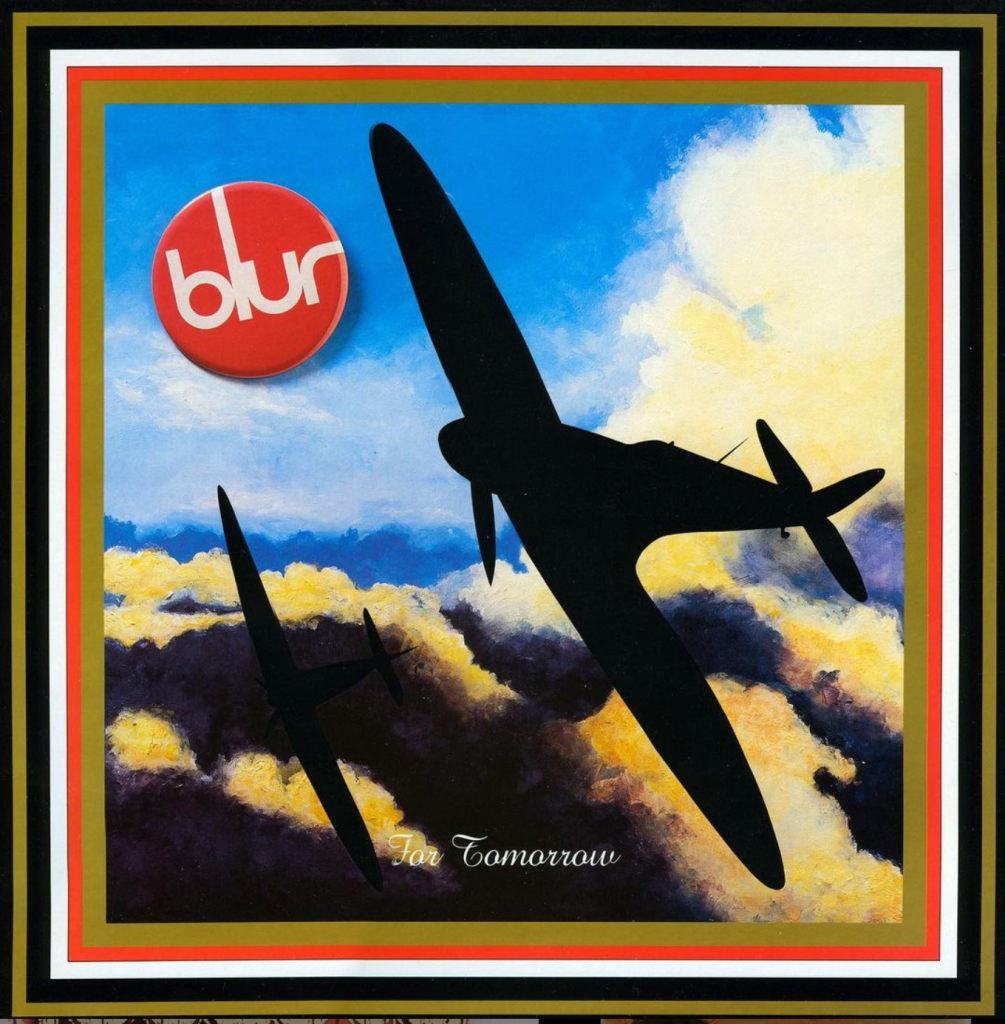
Aircraft depicted: Two early-model Supermarine Spitfires silhouetted against the bright blue sky and stormy-looking clouds as they bank towards the viewer, in an oil painting by artist Paul Stephens.
Does the image accurately reflect the music?: Blur had been sent off on a 44-date tour of the US and UK in 1992 by their record company, in order to recoup a £60,000 debt run up due to questionable management. The tour was a harrowing ordeal, where the band drank heavily, played to disinterested crowds only interested in grunge, and frequently ended up fighting each other out of sheer frustration.
On their return to the UK, they resolved to produce a record that examined the Britain they had missed during their time abroad, an album that evolved into 1993’s Modern Life Is Rubbish. ‘For Tomorrow’ was the first single from that album, and it is a paean to a partly mythical retro-future Britain, as previously imagined into being by the likes of The Kinks, The Small Faces, The Jam and Slade.
The band reportedly put Spitfires on the cover as it was the most British thing they could think of. And yes, it sounds just like that.
How good is the record?: Genuinely marvellous. Given that when it was recorded, the band were broke, miserable, under threat of being dropped by their label and had to abort their first attempt at recording the album after disappointing results, it is remarkable that ‘For Tomorrow’ came out as it did. Managing to somehow sound simultaneously lush and edgy, it is fresh, accomplished and introduced us to the idea of Britpop: something that until then we hadn’t known about and didn’t know we wanted.
8. Scarfo – Luxury Plane Crash (Album, 1997)

Aircraft depicted: A Swissair Convair CV990 Coronado with landing gear down, about to land at an airport that may be Hong Kong Kai Tak. All of the Swissair branding has been removed, presumably along with the notoriously filthy dark trails from the General Electric CJ805-23B turbofan engines (a type based on the equally smoky GE J79 turbojet of F-4 Phantom fame).
It isn’t clear if the aircraft and background are from the same photograph, as the image has clearly been modified. The tower blocks look like Kai Tak, though, and Swissair Coronados did fly there from Zurich, as shown in this period film, although the thirsty 990 had to stop for a drink four times on the way.
Does the image accurately reflect the music?: Given Scarfo were a tight, spiky, late-Britpop outfit known for their sharp songwriting, sharp clothes and fondness for obscure and arcane equipment, the cover of Luxury Plane Crash is a bit underwhelming. Rather than fitting seamlessly with the atmosphere of the record (as with Suede’s Sci-Fi Lullabies) or making a clear reference to it (as with Les Rallizes’ Flightless Bird…), this cover has the clear implication of an overworked design team saying “will this do?”
How good is the record?: It has its moments. The band have some difficulty maintaining the wiry, frenetic energy of the singles ‘ELO’, ‘Alkaline’ and ‘Cosmonaut No 7’ and the record is a bit patchy as a result. But it’s still a fine effort and far better than most of the tired remnants of Britpop that were their peers.
Scarfo weren’t helped by the fact that their drummer, Al Saunders, was run over by a car in 1996, forcing them to effectively take a year out to allow him to recover, robbing them of a lot of their momentum just before the release of the album.
9. The Screaming Blue Messiahs – Good And Gone (Mini-album, 1984)

Aircraft depicted: A three-ship formation of Republic P-47N Thunderbolt fighters in bare-metal livery, reportedly taken in 1947. The image has been mirrored (so the aircraft are now travelling left-to-right, rather than right-to-left) and the serial numbers removed from the tails to disguise this fact. (They were, for anyone interested, from front to back: 488576, 488589, 488577). The image has also been colourised, as the original is in black and white.
Does the image accurately reflect the music?: Given that the record is a howling, yelping punk-blues mash-up of a subgenre known as “psychobilly”, and features references to Americana generally, and guns, cars, trucks and aeroplanes in particular, then yes, it does. If this record was an aeroplane, it would definitely be a P-47: an overpowered flying hot rod covered in guns, used for hooning around and shooting up whatever is put in front of it. Theoretically they could have used a picture of some Hawker Typhoons, which did some of the same things (The Screaming Blue Messiahs were from London, after all), but it wouldn’t have been quite right. It needs the bare metal, the big star-and-bar roundel, the triangle of fifty-cal barrels protruding from the wings, the conspicuous flash. It needs ramalama, a bit of showbiz. You just don’t get that with a Typhoon in RAF camo.
How good is the record?: Great. Probably not for everyone – people whose musical tastes do not extend beyond Taylor Swift might find it a bit much – but the Messiahs’ feral, turbosupercharged pub blues is just unequivocally marvellous. I gather they were a magnificent live act (you only have to listen to about twenty seconds of this to know they were awesome live) and it is a great shame to me that I never got to see them. Although, to be fair, I was only eight when Good And Gone came out and I was probably more concerned with Lego and Panini football stickers at the time.
10. Primal Scream – ‘If They Move, Kill ‘Em’ (CD single, 1998)
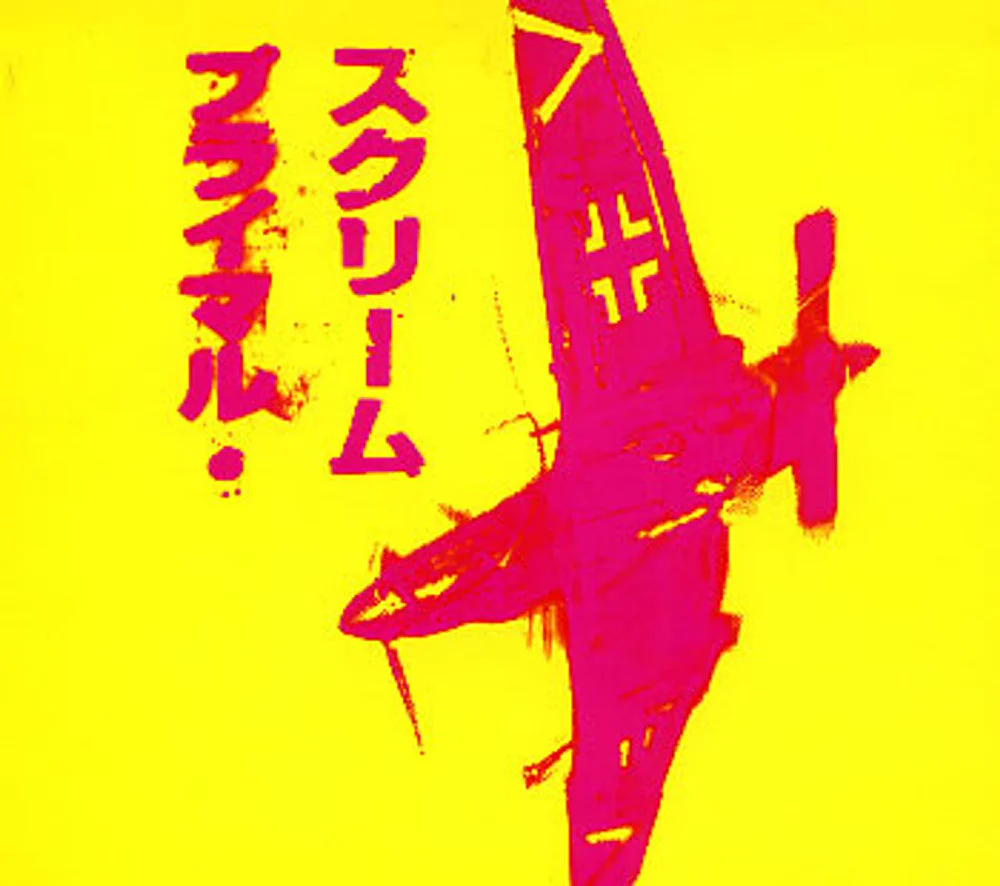
Aircraft depicted: The sleeve depicts a Junkers Ju 87 ‘Stuka’ ground-attack aircraft banking into a dive. From the bulges on the trailing edges of the wings and what look like lengthy barrels projecting from the leading edges, it looks like a G-1 or G-2 Kanonenvogel model, armed with a 37mm Flak 18 anti-aircraft gun in a pod under each wing for anti-tank work.
The aircraft image itself has been reproduced in neon pink on a bright yellow background in a sort of blurry screen-print style, along with two lines of Japanese katakana script reading “PRIMAL SCREAM”. The “V” under the left wing suggests this might be an image of the personal mount of famed Stuka pilot and enthusiastic Nazi Hans Ulrich Rudel (or one of them, at least – he had 30 aircraft shot out from under him in his wartime career).
We will come back to him later.
I have been unable to track down the original image this piece of artwork was rendered from, which is odd, since Rudel was the most decorated Nazi pilot of WWII and an airborne image of one of his aircraft would be very famous. This makes me think that rather than being adapted from a stock photo, the cover image was custom-created from one of the numerous models or kits available of Rudel’s Ju 87s. It is credited on the sleeve to Paul Kelly, a designer and filmmaker who has also worked with Saint Etienne, so it’s unlikely he was around in person to capture Rudel’s G-2 as it winged over into an attack run.
Does the image accurately reflect the music?: The Stuka, with its steep dive-bombing attacks, screaming “Jericho Trumpet” sirens, and blitzkrieg history, is a machine with an image that is crying out to be used on a sleeve by a hardcore Rock and Roll band. You could imagine Motörhead having a record cover featuring a Stuka, for example*. Primal Scream do have a song called ‘Stuka‘, but it is not on this CD (it is on their fifth album Vanishing Point, the one that also features the original version of ‘If They Move, Kill ‘Em’), although it may have inspired the artwork.
The music that is on this single is typical of Primal Scream’s late 90s output: a quite scary remix of ‘If They Move…’ by My Bloody Valentine’s Kevin Shields that should come with some sort of warning before you listen to it on headphones; a dubby, echo-laden cover of the Jesus and Mary Chain’s ‘Darklands’; another wah-wah heavy “Disco” remix of ‘If They Move…’; and a track called ‘Badlands’ which is an even slower, dubbier version of the earlier cover of ‘Darklands’ that probably sounds great at 3am if you’re stoned.
Does it sound like a neon pink Stuka? That’s the thing. It could, because Primal Scream are exactly the sort of band that could carry it off. When they rock, they mean it. They’re not Motörhead, but they actually covered the song ‘Motörhead’ on Vanishing Point. They really believe. They do not do this stuff by halves.
BUT… they are also notoriously left-wing and that makes it seem this image of Rudel’s Stuka has appeared on their record as the result of some terrible error in the creative process. Rudel was an unapologetic Nazi until his death in 1982, set up a “relief agency” for Nazi war criminals and worked hard after the war to help former members of the regime escape justice in South America. Primal Scream are an avowed anti-fascist band. If they had known what that picture was, there is no way on Earth they would have let it go out. Sure, they might have had a Stuka on there, in pink to reclaim it for Rock and Roll, mess with preconceptions and all that. But not Rudel’s plane. That’s somebody not doing their homework and it’s too much. The cover represents something, but it’s not them and I am not sure they even know it.

How good is the record?: As with a lot of these choices, it rather depends on your expectations. But it is, by most objective standards, a pretty extraordinary musical document by a band who hadn’t come anywhere near to running out of ideas yet. Their next album, by coincidence, was 2000’s XTRMNTR, which had US Navy deck crew and an F-4 on the cover.
* As far as I know, Motörhead never had a record with a Stuka on the sleeve. They did use an image of the band flying a Heinkel He 111 on the cover of their Bomber album, though, and for a while they used a custom-built lighting rig in the shape of a Heinkel in their live shows, as shown on the cover of the seminal live album No Sleep ‘Til Hammersmith.

You missed out XTRMNTR. f4?
not alt rock I suppose, but surely the Beastie Boys deserved a mention for Licence to Ill? It’s almost punk rock.
Hard to believe you left out the greatest of the lot Led Zeppelin 1 …
That is not alternative rock
Wait, you got through ten albums and nary a one was Blue Oyster Cult’s Secret Treaties? Not only did the album art was them as Luftwaffe personnel in front of a ME 262, they wrote a technically & historically correct hard rock song about the plane.
Dude
Smile by Japanese band Boris has the x29 on the sleeve and is astounding
Blue Oyster Cult – Secret Treaties? (Me 262)